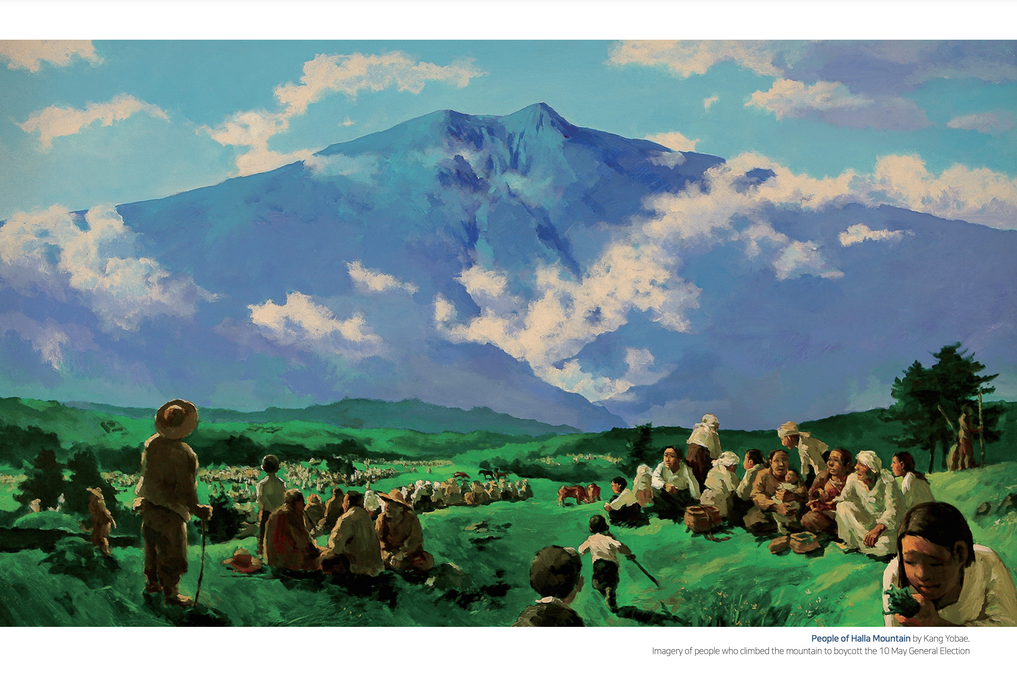Jeju Online Memorial
Jeju 4.3 Online Memorial

Why We Remember Jeju 4.3 Incident
Jeju is described as a beautiful tourist Island but in fact all the parts of Jeju was once a plae where genocide took place. "Jeju Online Memorial" project is all about raising awareness of the 4.3 incidents. Although it was an event that resulted in the death of a significant fraction of the total population, this incident is not being recognized enough. This project serves as a comprehensive resource for the 4.3 Jeju incident, allowing us to present a wealth of information and photos about this historical event. It is important because there are still victims alive in Jeju, and these people are still going through the nightmare of the event even now. The 4.3 incident is interconnected with politics and ideology, and Jeju is the victim of the desire for authority and neglect. It is not too late to fix what went wrong, and this project is trying to achieve and promote peace and justice for the Jeju community.

Summary of the Jeju 4.3 incident
The April 3 Jeju uprising was a series of incidents in which some 25000~30,000 Jeju residents were killed as a result of clashes between armed civillian groups and military government forces.
It primarily took place between March 1, 1947, when the police opened fire on civilians, and April 3, 1948, when members of the Jeju chapter of the South Korea Labour party began an uprising to protest against both opression by police and Northwest Youth Assiociation as well as separated election.
Timeline
Freedom and Frustrations
1945
Korea is liberated from Japanese colonial rule at the end of World War II. On Sept 9th, the Japan signed the Instrument of surrender in the Japnese General Government Buildings in Seoul, and the Japanese flag was lowered. Yet what took its place was not Korean flag but the Starts and Stripes. The Japanese army withdrew and US troops had replaced them
Desire For freedom
1947
Those who had personally experienced ethnic discrimination were eager to establish an independent nation. They engaged in self-governing and educational activities. The movement for self-governance was expressed by the formation of a preparation committee for the founding of nation and the ensuring activities of people's Committee.
Shooting on March 1st : the cause of 4.3 incident
March 1, 1948
The people of Korea were delighted with liberation in 1945 but eventually they realized that they didn't really have thier country back even after two years. Instead what they had was USAMGIK south of 38 degree north latitude. This caused people to protest under the slogan "Let's Achieve United Independence." Over 30,000 people gathered and protested for freedom.
March 1, 1948
After the ceremony, some of the young people began a street protest. As protestors passed the Gwandeokjeong square, where Jeju police station was located, a gunshot rang out. A child had been hit by a mounted police man, who ignored and tried to lwave the sscene. The spectators who witnessed the accident shouted at the police man to apologize but the police man ignored the protestors. The people started throwing stones at the police and immediately bullets flew into the crowd.
The police fire killed six civilians, including a woman holding a baby and an elementary student and injured eight.
Climax of the anger
March 1947
However, rather than apologizing for the incident, the US military government and the police insisted that they had acted in self-defense and began to arrest the leaders of the street demonstration.
Strike
March 10, 1947
The public outrage against USAMGIK and the police manifested as a general stike. The strike started from Jeju Provincial GOvernment Offive and spread to other government insitutions including courthouses and the prosecutors' office, transportation companies, communication agencies, financial insituations, schools and all the stores. A total of 166 institutionand and 41,211 people participated.
Uprising in Return for Oppression
April 3, 1948
In the early morning of April 3, 1948, 350 guerrilla fighters of the Jeju chapter of the workers' Party of South Korea launched an armed insurrection by attacking 12 police substations and right wing groups on Jeju Island.
Reconciliation and Memorialization
1948-1954
Efforts to reconcile the events of the Jeju 4.3 event and memorialize its victims continue to this day. Memorials, museums, and educational programs have been established to remember the victims and educate the public about the tragic events that took place on Jeju Island.
Reborn as an Island of Peace
2003
The Jeju 4.3 incident investment report, which defines the incident as a violence of human rights by state power, was finalized on October 15, 2003. This was the first statutory report that shed new light on a past event in modern korean history. The first proposal that was realized was the government apology. On October 31, President Roh Moon-hyun visited Jeju island and publicly apologized for the faults of the state to the people of Jeju and the bereaved families of Jeju 4.3 victims.
Testimonial with a Survivor of the Jeju 4.3 Incident
Art Gallery
Progress
Project Timeline

Contact
Adress
Educityro 23
Email
seojeankim@gmail.com
Phone
+82 (10) 5249-3234




May peace prevail
Remembering the victims of the Jeju 4.3 tragedy. We must never forget the lives lost and the fight for peace and human rights. My thoughts are with their families.